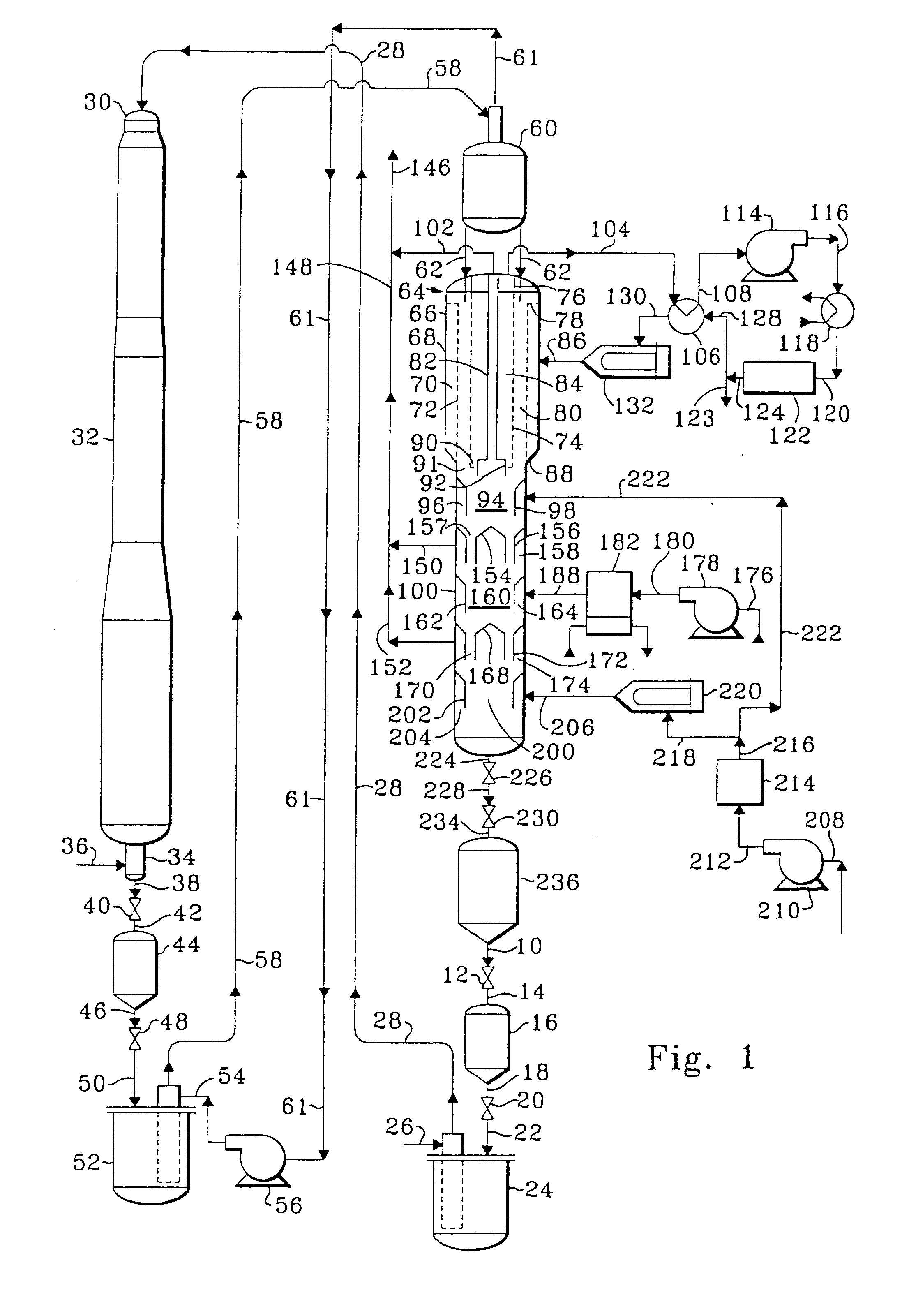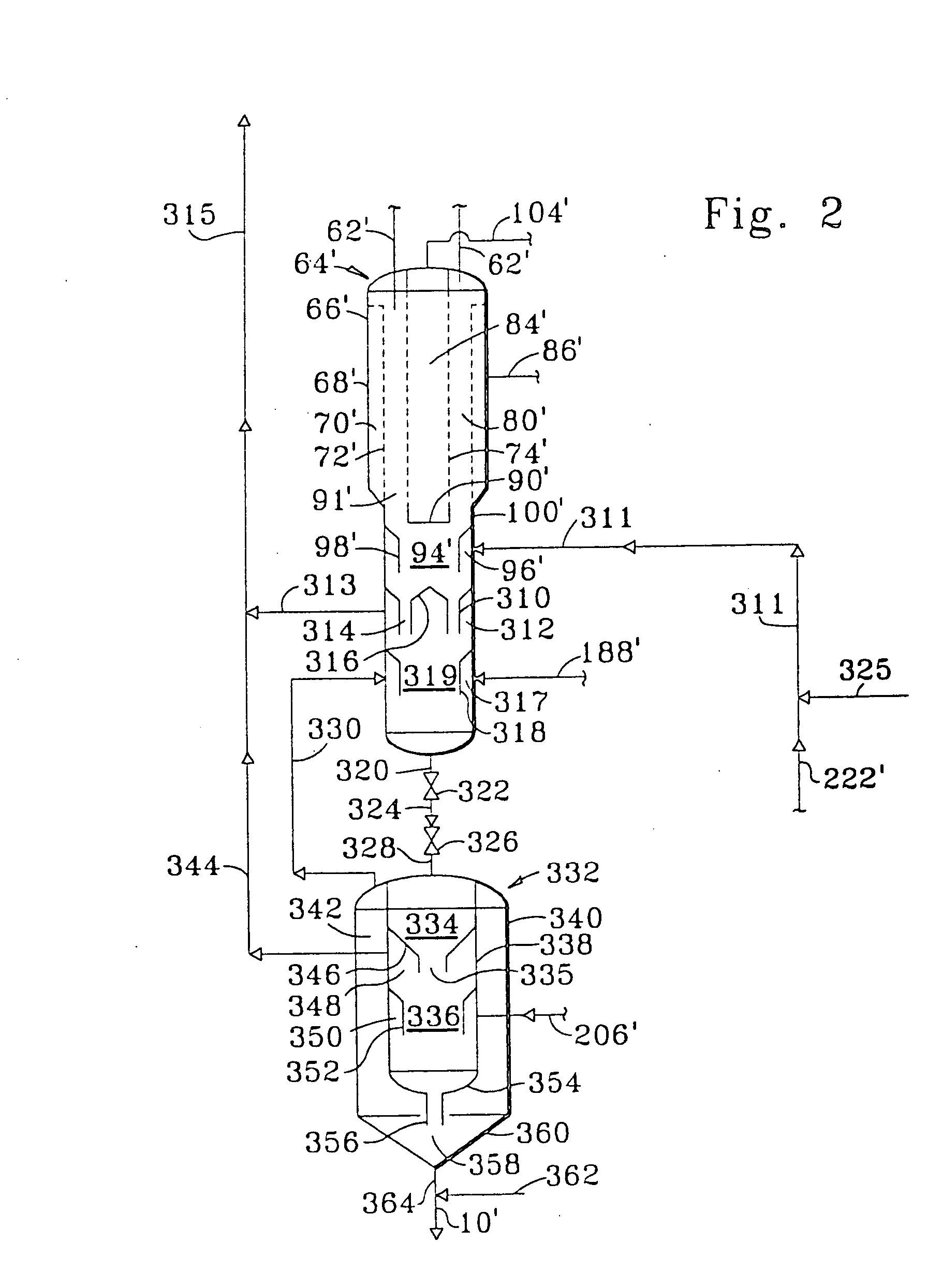Method for preparing dehydrocyclodimerization catalyst
a dehydrocyclodimerization and catalyst technology, applied in the direction of catalyst activation/preparation, catalyst regeneration/reactivation, physical/chemical process catalysts, etc., can solve the problems that the loss of activity due to hydrogen exposure cannot be restored by regeneration means, and the catalyst deactivation cannot be achieved. , to achieve the effect of convenient incorporation and us
- Summary
- Abstract
- Description
- Claims
- Application Information
AI Technical Summary
Benefits of technology
Problems solved by technology
Method used
Image
Examples
examples
In several of the examples, deionized (hereafter DI) water is used. The DI water was produced in a deionization system in the following manner. City water passed through a water softening bed to remove cations such as calcium and magnesium ions by exchanging with sodium ions. After softening, the water passed through a carbon filter to adsorb chlorine and chlorine-containing compounds by adsorption. The filtered water passed through a membrane-containing reverse osmosis unit for removal of dissolved solids, which were rejected in a concentrate stream. The reverse osmosis unit also removed sodium carbonate, organics, and bacteria from the filtered water. After reverse osmosis, the water passed through a separate cationic resin bed and a separate anionic resin bed. The function of the separate cationic resin bed was to remove mainly sodium cations, but also magnesium and calcium cations, and the separate anionic resin bed functioned to remove anions, such as sulfates, carbonates, and...
examples 1 and 2
show the effect of hydrogen deactivation on the propane conversion by a dehydrocyclodimerization catalyst.
example 1
This example describes the typical preparation of a dehydrocyclodimerization catalyst. A first solution was prepared by adding phosphoric acid to an aqueous solution of hexamethylenetetraamine (HMT) in an amount to yield a phosphorus content of the finished catalyst equal to about 7.3-7.4 weight percent. A second solution was prepared by adding a ZSM-5 type zeolite to enough alumina sol, prepared by digesting metallic aluminum in hydrochloric acid, to yield a zeolite content in the finished catalyst equal to about 67 weight percent. These two solutions were commingled to achieve a homogeneous admixture of HMT, phosphorus, alumina sol, and zeolite. This admixture was dispersed as droplets into an oil bath maintained at about 100° C. (212° F.). The droplets remained in the oil bath until they set and formed hydrogel spheres. These spheres were removed from the oil bath, water washed, air dried, and calcined at a temperature of about 566° C. to about 760° C. (1050° F. to 1400° F.). A ...
PUM
| Property | Measurement | Unit |
|---|---|---|
| temperature | aaaaa | aaaaa |
| time | aaaaa | aaaaa |
| temperature | aaaaa | aaaaa |
Abstract
Description
Claims
Application Information
 Login to View More
Login to View More - R&D
- Intellectual Property
- Life Sciences
- Materials
- Tech Scout
- Unparalleled Data Quality
- Higher Quality Content
- 60% Fewer Hallucinations
Browse by: Latest US Patents, China's latest patents, Technical Efficacy Thesaurus, Application Domain, Technology Topic, Popular Technical Reports.
© 2025 PatSnap. All rights reserved.Legal|Privacy policy|Modern Slavery Act Transparency Statement|Sitemap|About US| Contact US: help@patsnap.com


